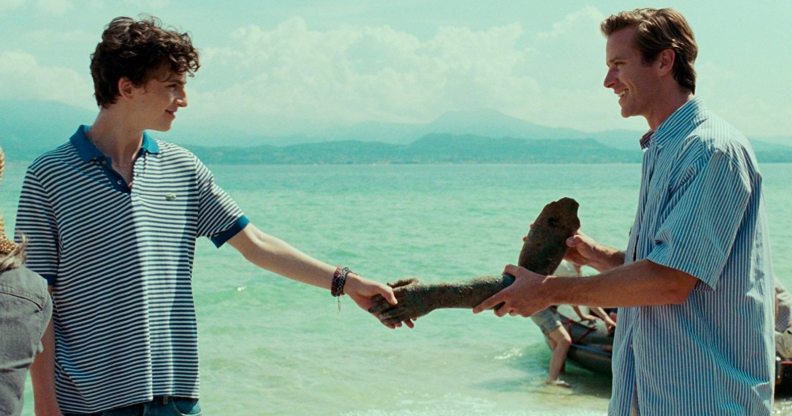LGBT representation in Hollywood has somehow got even worse

(Call Me By Your Name)
(Call Me By Your Name)
LGBT representation in major studio releases decreased significantly in 2017, according to a major new report.
GLAAD, an LGBT media advocacy organisation, has released its sixth annual Studio Responsibility Index, which records the number of LGBT people featuring in films released by the seven biggest motion picture studios.
In the report, the group highlighted that box office successes such as Black Panther and Wonder Woman have proven that representing minority groups is not only important but viable, and more needs to be done to include LGBT people.
GLAAD chief executive Sarah Kate Ellis said: “At a time when the entertainment industry is holding much-needed discussions about inclusion, now is the time to ensure the industry takes meaningful action and incorporates LGBTQ stories and creators as among priorities areas for growing diversity.”

(God’s Own Country)
According to the research, in 2017 only 14 major studio releases had LGBTQ characters, making up only 12.8 percent of films.
This is a 5.6 percent decrease within one year, as LGBT characters were included in 18.4 percent of major films released in 2016.
GLAAD counted only 28 explicitly LGBT characters represented in major films released in 2017, a decrease from 70 characters in 2016 and 47 in 2015.
This means that the films of 2017 represent a tie for the lowest number of LGBT inclusive films since GLAAD began to track LGBT representation in 2012.

(The Handmaiden)
None of the seven major studios ranked by the report were given an “excellent” or “good” rating.
The highest performing studio was Universal, with four LGBT inclusive films, which was given an “insufficient” rating.
Sony Pictures and Disney were given the worst rankings, with only one LGBT inclusive film released per studio.

Moonlight was highly praised in a previous report.
In the report, GLAAD explicitly highlighted the recent trend in comic book adaptations of either straightwashing characters or cutting out filmed scenes in which the character was explicitly LGBT.
Related: Thor is a lesbian icon, according to fans
Gay men were seen to be the most well represented in LGBT inclusive films, with 64 percent of inclusive films featuring a gay male character.
In comparison, no major studio released a film that included a transgender or non-binary character, as the Oscar-winning A Fantastic Woman was distributed by a Sony Pictures affiliate and therefore was not counted in GLAAD’s report.

(A Fantastic Woman)
GLAAD did praise an increase in the racial diversity of LGBT characters on screen, as the majority of on-screen LGBT characters in 2017 were people of colour.
As well as the amount of representation, GLAAD also monitors whether the representation is meaningful, using the Vito Russo test to see whether the character is fairly represented.
GLAAD has now introduced a suggested quota for major film studios, where 20 percent of releases include meaningful LGBT characters by 2021, upping this to 50 percent in 2024.

